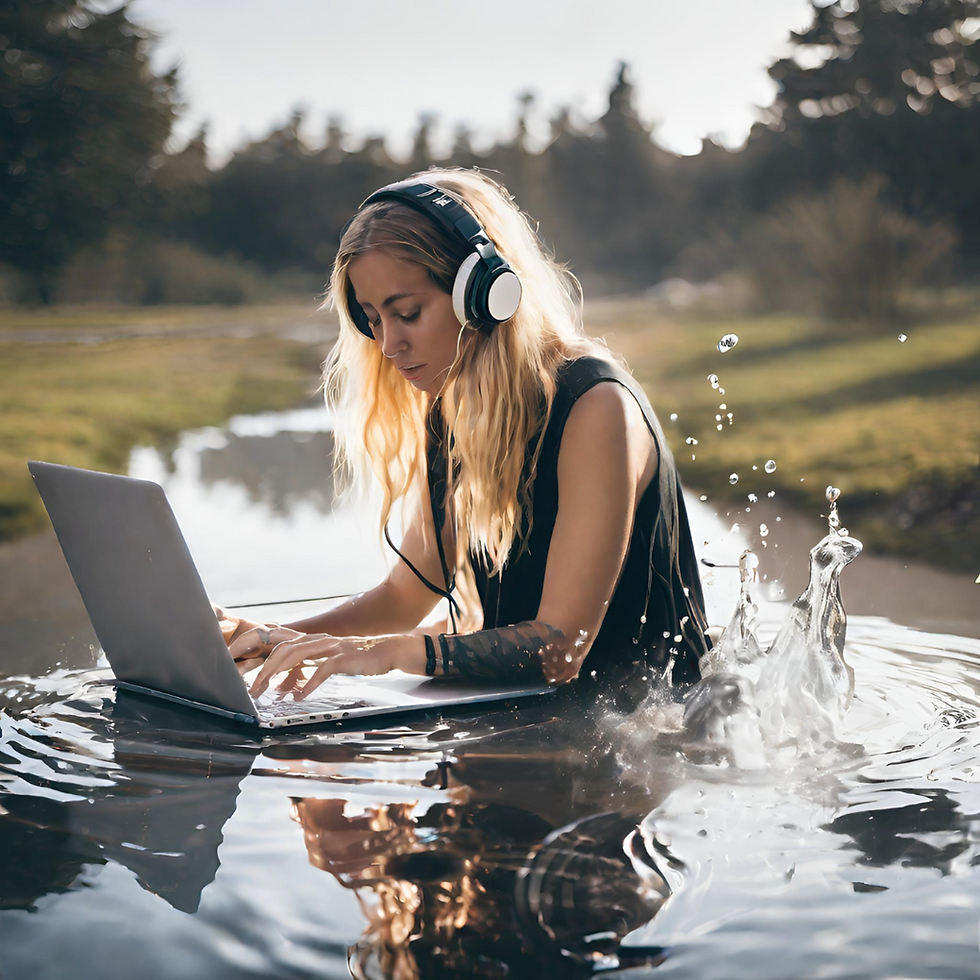Creating Multi-Sensory Music with Field Recordings
- Laura

- Apr 9, 2024
- 2 min read

Field recording stands as a pivotal element for music producers interested in capturing and integrating natural, organic sounds into their musical compositions.
But how do you go about recording these unique sounds whilst ensuring their quality isn’t compromised? Let’s explore.
Why Field Recording?
The allure of field recording lies in its ability to transport listeners, offering a sensory journey through diverse soundscapes.
These authentic sounds, from the rustling of leaves to the distant thunder, provide a tactile sense of place and moment, injecting life and soul into musical pieces.
Tools of the Trade
Quality field recording hinges on the right equipment. High-quality microphones, portable recorders, and appropriate windshields are essential.
Brands like Zoom and Tascam offer portable solutions with pristine audio quality, making the capturing of nature’s symphony both accessible and convenient.
The Process
Research: Know your terrain. Every environment presents a distinct soundscape. Understand its auditory elements and plan accordingly.
Experimentation: Don’t shy away from experimentation. Explore different mic placements and settings to capture the most authentic sounds.
Post-Production: The raw recordings undergo refinement in post-production, ensuring the sounds integrate seamlessly into musical compositions.
Challenges and Solutions
Field recording isn’t without its challenges. Environmental noises, unpredictable weather, and equipment handling noises can all impact the recording quality.
Solutions lie in meticulous planning, the right equipment, and in some cases, post-production magic to clean and enhance the audio.
Field Recording Ethics
Respect to nature and wildlife is paramount. It’s essential to minimize disturbance to natural habitats and adhere to ethical practices during the recording process.
Respecting private properties and restricted areas is non-negotiable. Always secure necessary permissions before embarking on field recording sessions.
Concluding Thoughts
Field recording is more than a technical process; it's an art form. It marries the technical skills of a music producer with the aesthetic appreciation for the natural world’s sonic offerings.
The resultant audio not only enriches the musical compositions but also offers listeners a multi-sensory experience, a journey beyond the ordinary auditory confines.
For those eager to delve into the intricate relationship between natural sounds and music production, the LOF Audio Blog is your gateway. Navigate the nuances and techniques that blend the world's authentic sounds into modern compositions. Visit the LOF Audio Blog now and start your sonic exploration with us!

From her early beginnings as a passionate pianist to her evolution as a seasoned audio engineer, Laura's journey through the music industry has been rich and diverse. After earning her credentials from Recording Arts Canada (RAC) in 2018, she quickly found her footing in renowned studios, honing her craft across a wide spectrum of genres. Today, as the visionary behind LOF Audio, she continues to shape the sonic landscape, merging traditional nuances with contemporary sounds.
Dive into her articles to experience the confluence of music, nature, and psychoacoustics.


Comments